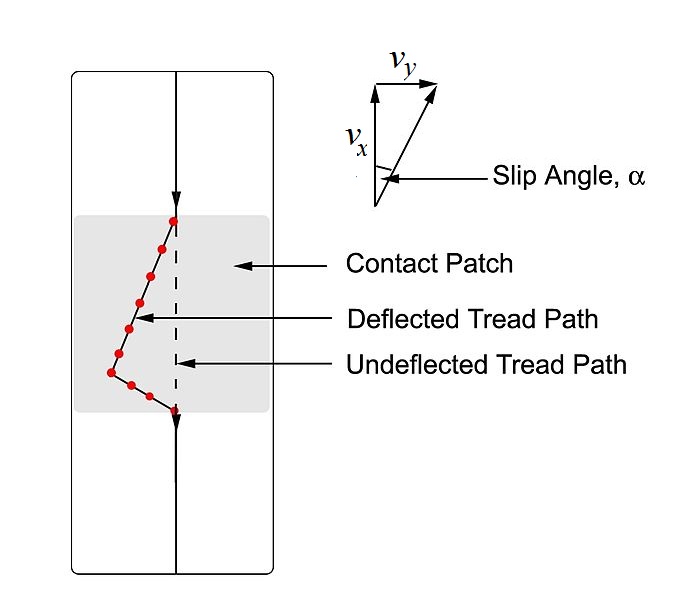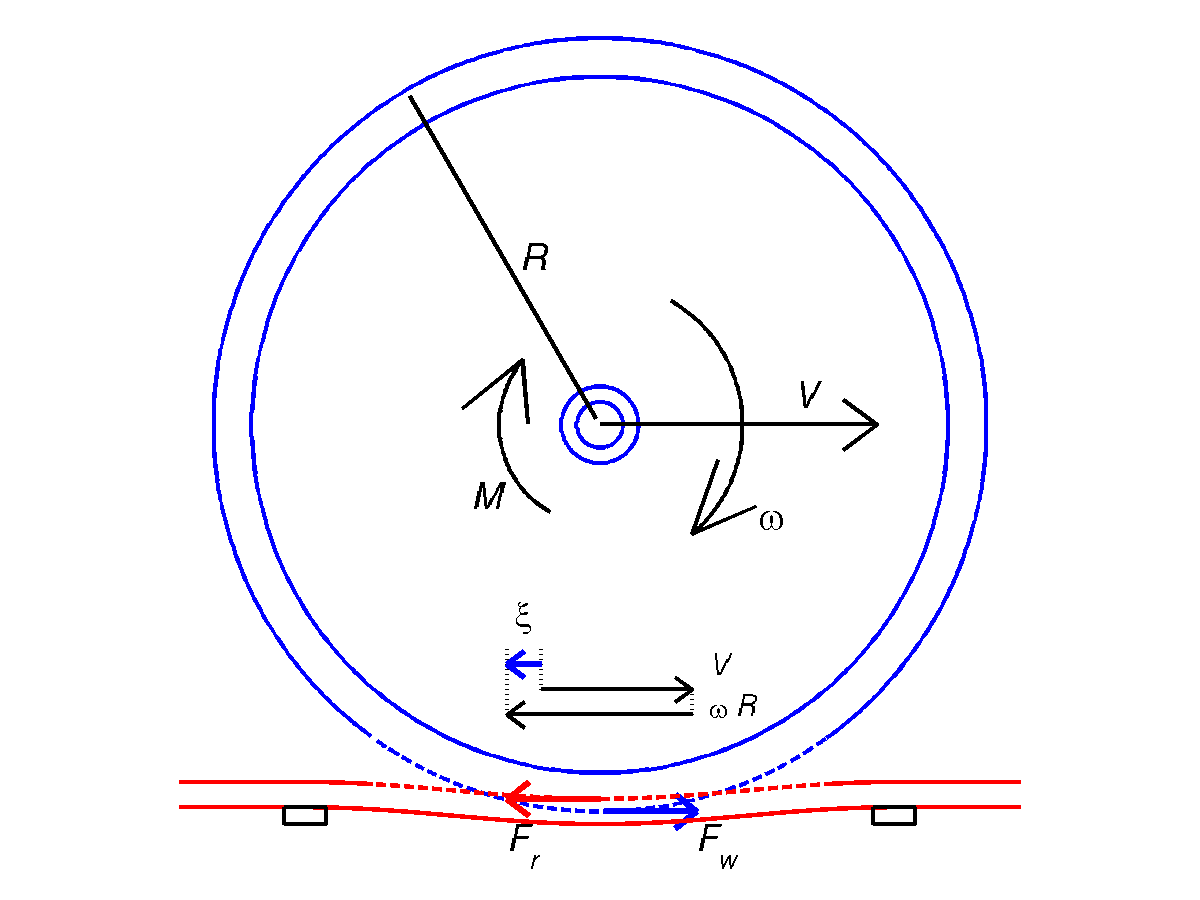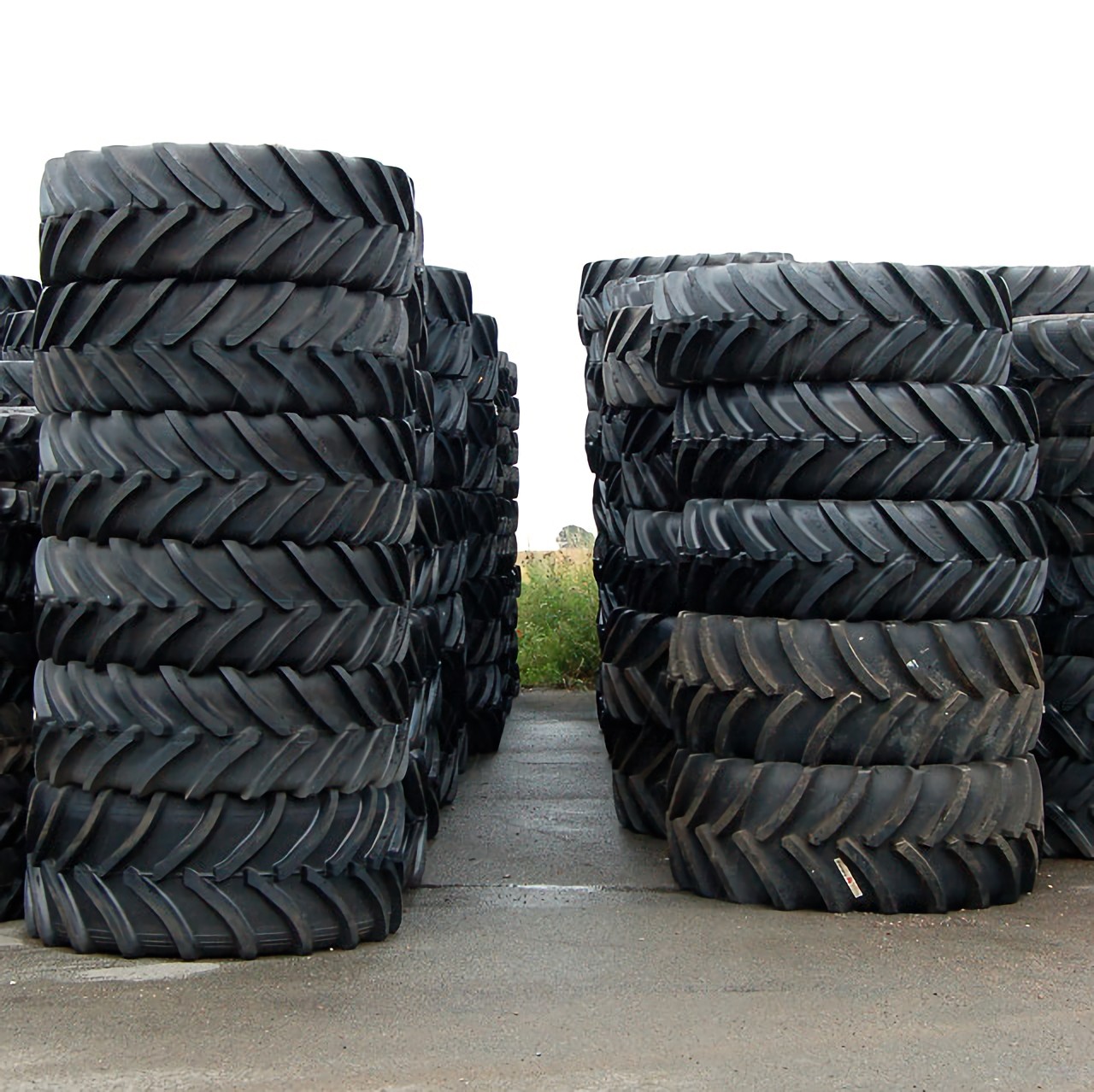|
Slip (vehicle Dynamics)
In (automotive) vehicle dynamics, slip is the relative motion between a tire and the road surface it is moving on. This slip can be generated either by the tire's rotational speed being greater or less than the free-rolling speed (usually described as ''percent'' slip), or by the tire's plane of rotation being at an angle to its direction of motion (referred to as slip angle). In rail vehicle dynamics, this overall slip of the wheel relative to the rail is called ''creepage''. It is distinguished from the local sliding velocity of surface particles of wheel and rail, which is called ''micro-slip''. Longitudinal slip The longitudinal slip is generally given as a percentage of the difference between the surface speed of the wheel compared to the speed between axle and road surface, as: : \text=-\frac where \Omega is the longitudinal component of the rotational speed of the wheel, r is wheel radius at the point of contact and v_x is vehicle speed in the plane of the tire. A pos ... [...More Info...] [...Related Items...] OR: [Wikipedia] [Google] [Baidu] |
Vehicle Dynamics
For motorized vehicles, such as automobiles, aircraft, and watercraft, vehicle dynamics is the study of vehicle motion, e.g., how a vehicle's forward movement changes in response to driver inputs, propulsion system outputs, ambient conditions, air/surface/water conditions, etc. Vehicle dynamics is a part of engineering primarily based on classical mechanics. Factors affecting vehicle dynamics The aspects of a vehicle's design which affect the dynamics can be grouped into drivetrain and braking, suspension and steering, distribution of mass, aerodynamics and tires. Drivetrain and braking * Automobile layout (i.e. location of engine and driven wheels) * Powertrain * Braking system Suspension and steering Some attributes relate to the geometry of the suspension, steering and chassis. These include: * Ackermann steering geometry * Axle track * Camber angle * Caster angle * Ride height * Roll center * Scrub radius * Steering ratio * Toe * Wheel alignment * Wheelbase Distr ... [...More Info...] [...Related Items...] OR: [Wikipedia] [Google] [Baidu] |
Tire
A tire (American English) or tyre (British English) is a ring-shaped component that surrounds a wheel's rim to transfer a vehicle's load from the axle through the wheel to the ground and to provide traction on the surface over which the wheel travels. Most tires, such as those for automobiles and bicycles, are pneumatically inflated structures, which also provide a flexible cushion that absorbs shock as the tire rolls over rough features on the surface. Tires provide a footprint, called a contact patch, that is designed to match the weight of the vehicle with the bearing strength of the surface that it rolls over by providing a bearing pressure that will not deform the surface excessively. The materials of modern pneumatic tires are synthetic rubber, natural rubber, fabric, and wire, along with carbon black and other chemical compounds. They consist of a tread and a body. The tread provides traction while the body provides containment for a quantity of compressed ... [...More Info...] [...Related Items...] OR: [Wikipedia] [Google] [Baidu] |
Road
A road is a linear way for the conveyance of traffic that mostly has an improved surface for use by vehicles (motorized and non-motorized) and pedestrians. Unlike streets, the main function of roads is transportation. There are many types of roads, including parkways, avenues, controlled-access highways (freeways, motorways, and expressways), tollways, interstates, highways, thoroughfares, and local roads. The primary features of roads include lanes, sidewalks (pavement), roadways (carriageways), medians, shoulders, verges, bike paths (cycle paths), and shared-use paths. Definitions Historically many roads were simply recognizable routes without any formal construction or some maintenance. The Organization for Economic Co-operation and Development (OECD) defines a road as "a line of communication (travelled way) using a stabilized base other than rails or air strips open to public traffic, primarily for the use of road motor vehicles running on their own wheel ... [...More Info...] [...Related Items...] OR: [Wikipedia] [Google] [Baidu] |
Plane Of Rotation
In geometry, a plane of rotation is an abstract object used to describe or visualize rotations in space. In three dimensions it is an alternative to the axis of rotation, but unlike the axis of rotation it can be used in other dimensions, such as two, four or more dimensions. Mathematically such planes can be described in a number of ways. They can be described in terms of planes and angles of rotation. They can be associated with bivectors from geometric algebra. They are related to the eigenvalues and eigenvectors of a rotation matrix. And in particular dimensions they are related to other algebraic and geometric properties, which can then be generalised to other dimensions. Planes of rotation are not used much in two and three dimensions, as in two dimensions there is only one plane so identifying the plane of rotation is trivial and rarely done, while in three dimensions the axis of rotation serves the same purpose and is the more established approach. The main use for ... [...More Info...] [...Related Items...] OR: [Wikipedia] [Google] [Baidu] |
Slip Angle
In vehicle dynamics, slip angle or sideslip angle is the angle between the direction in which a wheel is pointing and the direction in which it is actually traveling (i.e., the angle between the forward velocity vector v_x and the vector sum of wheel forward velocity v_x and lateral velocity v_y, as defined in the image to the right). This slip angle results in a force, the cornering force, which is in the plane of the contact patch and perpendicular to the intersection of the contact patch and the midplane of the wheel. This cornering force increases approximately linearly for the first few degrees of slip angle, then increases non-linearly to a maximum before beginning to decrease. The slip angle, \alpha is defined as \alpha \triangleq -\arctan\left(\frac\right) Causes A non-zero slip angle arises because of deformation in the tire carcass and tread. As the tire rotates, the friction between the contact patch and the road results in individual tread 'elements' (finit ... [...More Info...] [...Related Items...] OR: [Wikipedia] [Google] [Baidu] |
Butterworth-Heinemann
Butterworth–Heinemann is a British publishing company specialised in professional information and learning materials for higher education and professional training, in printed and electronic forms. It was formed in 1990 by the merger of Heinemann Professional Publishing and Butterworths Scientific, both subsidiaries of Reed International. With its earlier constituent companies, the founding dates back to 1923. It has publishing units in Oxford (UK) and Waltham, Massachusetts (United States). As of 2006, it is an imprint of Elsevier. See also *LexisNexis Butterworths LexisNexis is a part of the RELX corporation that sells data analytics products and various databases that are accessed through online portals, including portals for computer-assisted legal research (CALR), newspaper search, and consumer informa ... References External links * Book publishing companies of the United Kingdom Elsevier imprints {{publish-corp-stub ... [...More Info...] [...Related Items...] OR: [Wikipedia] [Google] [Baidu] |
Contact Patch
Contact patch is the portion of a vehicle's tire that is in actual contact with the road surface. It is commonly used in the discussion of pneumatic (i.e. pressurized) tires, where the term is used strictly to describe the portion of the tire’s tread that touches the road surface. The term “footprint” is used almost synonymously. Solid wheels also exhibit a contact patch which is generally smaller than the pneumatic “footprint”. Contact patch size The contact patch is the only connection between the road and the vehicle. Pneumatic rubber tires The size and shape of the contact patch, as well as the pressure distribution within the contact patch, are important to the ride qualities and handling characteristics of a vehicle. Since the wear characteristics of tires is a highly competitive area between tire manufacturers, a lot of the research done concerning the contact patch is considered highly proprietary and, therefore, very little is published on the subject. Becau ... [...More Info...] [...Related Items...] OR: [Wikipedia] [Google] [Baidu] |
Frictional Contact Mechanics
Contact mechanics is the study of the deformation of solids that touch each other at one or more points. This can be divided into compressive and adhesive forces in the direction perpendicular to the interface, and frictional forces in the tangential direction. Frictional contact mechanics is the study of the deformation of bodies in the presence of frictional effects, whereas ''frictionless contact mechanics'' assumes the absence of such effects. Frictional contact mechanics is concerned with a large range of different scales. * At the macroscopic scale, it is applied for the investigation of the motion of contacting bodies (see Contact dynamics). For instance the bouncing of a rubber ball on a surface depends on the frictional interaction at the contact interface. Here the total force versus indentation and lateral displacement are of main concern. * At the intermediate scale, one is interested in the local stresses, strains and deformations of the contacting bodies in and n ... [...More Info...] [...Related Items...] OR: [Wikipedia] [Google] [Baidu] |
Aristotle's Wheel Paradox
Aristotle's wheel paradox is a paradox or problem appearing in the Greek work ''Mechanica'', traditionally attributed to Aristotle. It states as follows: A wheel is depicted in two-dimensional space as two circles. Its larger, outer circle is tangential to a horizontal surface (e.g. a road that it rolls on), while the smaller, inner one has the same center and is rigidly affixed to the larger. (The smaller circle could be the bead of a tire, the rim it is mounted upon, or the axle.) Assuming the larger circle rolls without slipping (or skidding) for one full revolution, the distances moved by both circles' circumferences are the same. The distance travelled by the larger circle is equal to its circumference, but for the smaller it is greater than its circumference, thereby creating a paradox. The paradox is not limited to wheels: other things depicted in two dimensions display the same behavior such as a roll of tape, or a typical round bottle or jar rolled on its side (the smalle ... [...More Info...] [...Related Items...] OR: [Wikipedia] [Google] [Baidu] |
Tires
A tire (American English) or tyre (British English) is a ring-shaped component that surrounds a wheel's rim to transfer a vehicle's load from the axle through the wheel to the ground and to provide traction on the surface over which the wheel travels. Most tires, such as those for automobiles and bicycles, are pneumatically inflated structures, which also provide a flexible cushion that absorbs shock as the tire rolls over rough features on the surface. Tires provide a footprint, called a contact patch, that is designed to match the weight of the vehicle with the bearing strength of the surface that it rolls over by providing a bearing pressure that will not deform the surface excessively. The materials of modern pneumatic tires are synthetic rubber, natural rubber, fabric, and wire, along with carbon black and other chemical compounds. They consist of a tread and a body. The tread provides traction while the body provides containment for a quantity of compressed air. ... [...More Info...] [...Related Items...] OR: [Wikipedia] [Google] [Baidu] |




